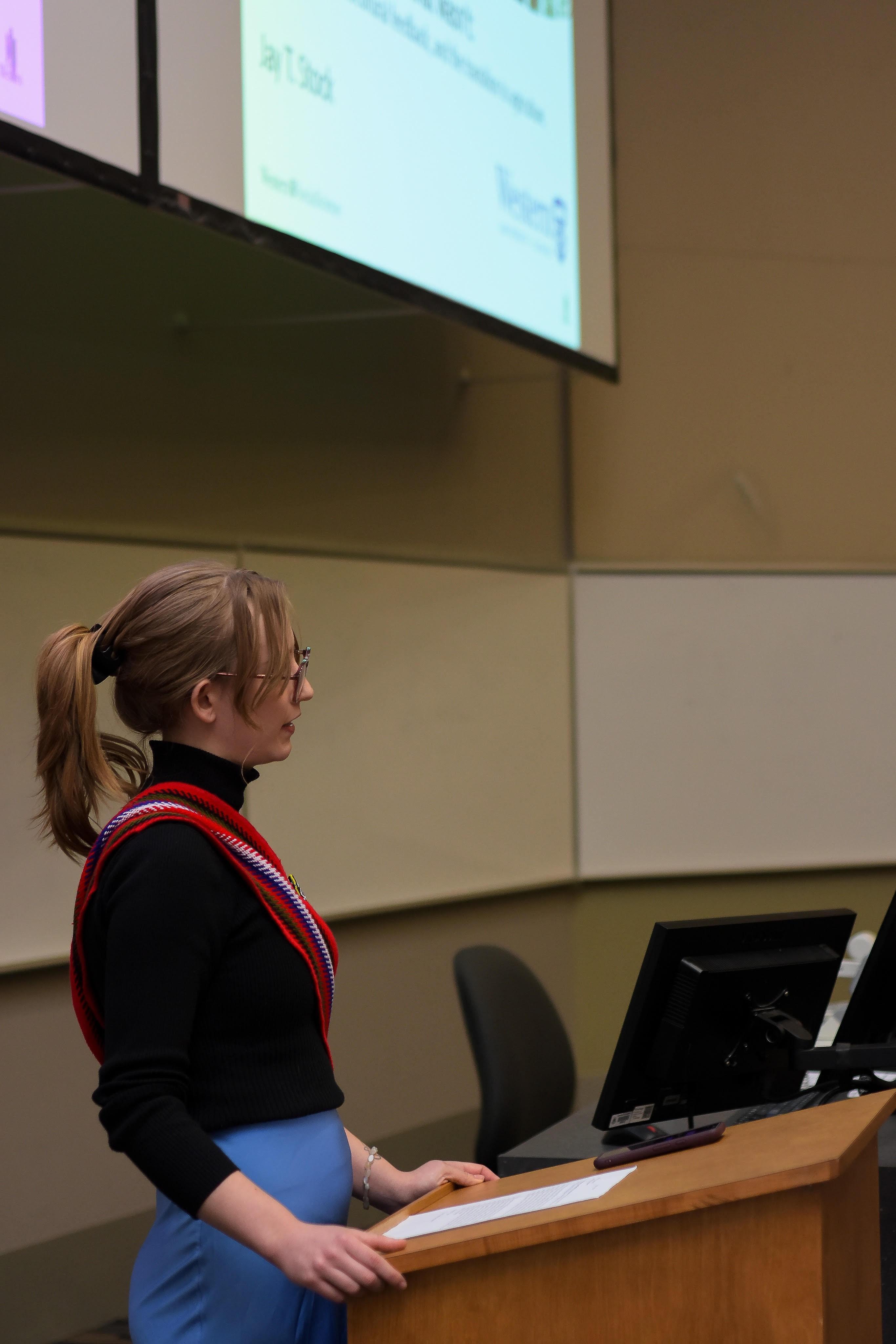Anthropology Graduate Student Highlight Series: Sadie Tremblay
30 August 2024

Welcome to the University of Alberta’s Anthropology Graduate Student Highlight Series! This series will showcase our graduate students' incredible work and research as they navigate their unique academic journeys. Each student is on their path, progressing at their own pace, and we celebrate the diversity of experiences and achievements within our department. Through these highlights, we aim to inspire and motivate our community by sharing our students' stories, challenges, and successes. Join us in celebrating their dedication and contributions to the field of anthropology.
The Impact of Forensic Anthropology: A Journey of Social Justice and Scientific Inquiry with Sadie Tremblay
A significant event profoundly influenced Sadie Tremblay's journey into forensic anthropology during her upbringing in Toronto. The news of Bruce McArthur's arrest for multiple murders left a lasting impact on her. For years, McArthur had targeted men in Toronto’s Gay Village with impunity, hiding his victims in flower pots. The identification and arrest of McArthur were made possible by the expertise of a local forensic anthropologist, among other professionals. This event was a turning point for Sadie, igniting a passion for forensic anthropology.
Early Academic ChallengesIn the initial years of her undergraduate degree, Sadie enrolled in typical biological science classes such as organic chemistry, cell signalling, and genetics. While she now appreciates the importance of these fields and enjoys incorporating this knowledge into her work, they did not resonate with her at the time. She felt a strong need for a change in direction.
Finding Her PathIn her third year, Sadie discovered her passion for human anatomy and the potential of using the body to answer questions about identities and life experiences. This field allowed her to merge her love for science with a commitment to social justice, particularly in identifying missing persons. Reflecting on the Bruce McArthur case, Sadie realized how crucial forensic anthropology is in solving such crimes and bringing justice to victims and their families. This realization solidified her decision to pursue forensic anthropology, where she could make a significant impact.
Contributing to the Field of AnthropologyBefore this year, Sadie had limited exposure to the four-field approach of anthropology, which includes cultural, linguistic, archaeological, and biological anthropology. Joining a diverse anthropology department pushed her to consider various knowledge systems and data interpretation strategies that consider broader social contexts. This interdisciplinary exposure has been enriching and has broadened her perspective on research and its applications. Sadie aims to contribute to anthropology by promoting scientific and statistical literacy, integrating biological and medical sciences techniques, and fostering a deeper appreciation for the human body. Her work emphasizes the importance of interdisciplinary approaches, bridging gaps between scientific domains to enhance our understanding of humanity.
Anthropology and Social ChangeOne of the most pressing social issues today is the national crisis of Missing and Murdered Indigenous Persons (MMIP). Forensic facial reconstructions are often used as a last resort to generate new leads in cases involving missing persons and unidentified remains. However, the effectiveness of these reconstructions is limited by the lack of robust facial soft tissue depth data, particularly for Indigenous faces in Western Canada.
Sadie's current research focuses on collecting soft tissue depth measurements from a small pilot sample. This data is crucial for improving the accuracy of forensic facial reconstructions, making them more recognizable and effective in sparking public recognition. By enhancing investigative capabilities, her research aims to address the ongoing MMIP crisis and help return the missing and murdered to their communities.
While advancements in forensic sciences alone cannot resolve the systemic inequalities that lead Indigenous persons to go missing, they play a critical role in identifying those whose cases remain open and unsolved. Sadie's work underscores the importance of combining scientific rigour with a commitment to social justice, highlighting how anthropology can contribute to meaningful social change.
Looking Ahead: The Future of Forensic Anthropology and Social JusticeSadie Tremblay's journey into forensic anthropology was profoundly influenced by the Bruce McArthur case, which highlighted the importance of this field in achieving justice for victims. Through her research and interdisciplinary approach, she hopes to contribute to anthropology by integrating scientific knowledge with a focus on social justice. By addressing critical issues like the MMIP crisis, Sadie aims to demonstrate how anthropology can be a powerful tool for social change and positively impact society.